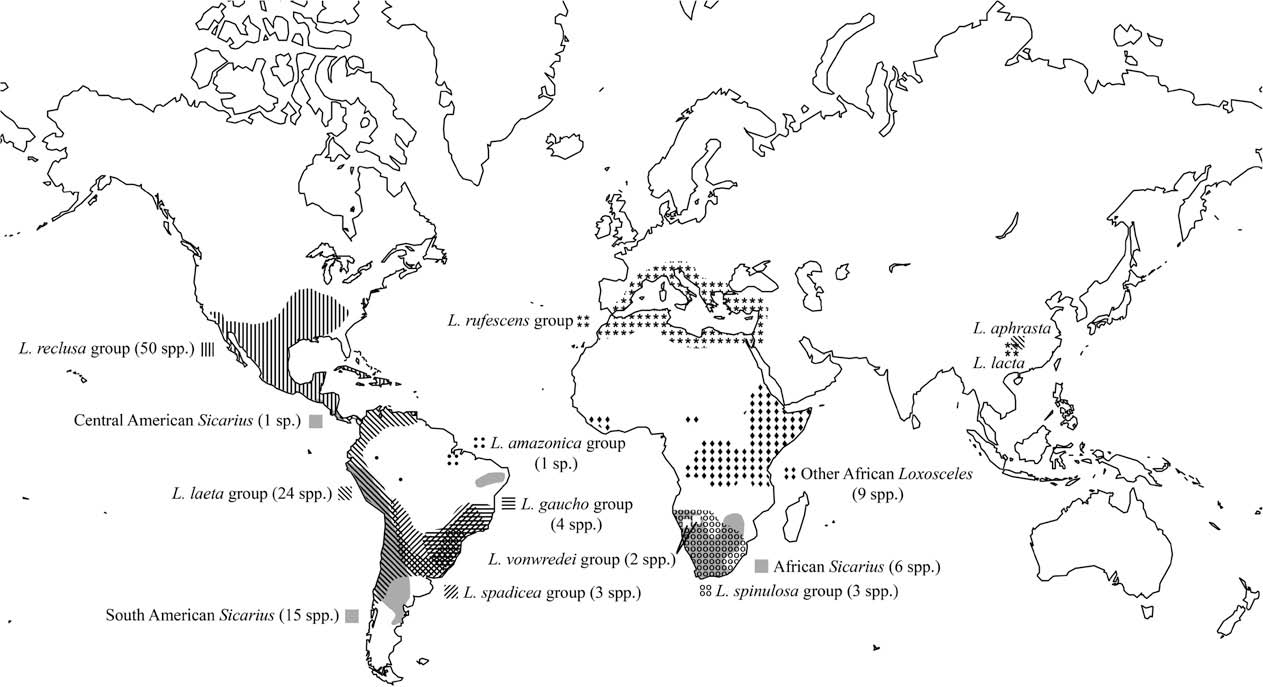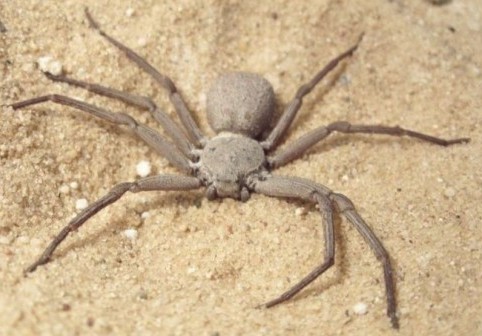Habitat
Based on evolutionary data, relatives of Sicarius hahni are
believed to have originated in the west part of Gondwana, which
is one of two supercontinents that existed about 500 million
years ago. Because they colonized this land so long ago,
Sicarius spiders are sometimes referred to as "living
fossils." As you can see on the map below, the current
distribution of the Sicariidae family is mostly in Africa and
Latin America. This divergence is hypothesized to have happened
when the supercontinents separated approximately 100 million
years ago, splitting Africa from the Americas. The other species
represented on this map is Loxosceles, which was
mentioned before as part of the
Sicariidae family.

The natural range for the Sicarius hahni is not expanding rapidly, because of the spider’s reluctance to go far from home. Based on data collected by examining different exoskeletons shed by these spiders throughout their life, individuals stay in the same location for most, if not all of their life. The other reason for this is because their dispersal techniques do not include ballooning, which other spider species exhibit. The six-eyed sand spider’s habitat usually consists of shallow caves, crevices, and between natural debris. They are most abundant in fine sand patches, because of their ability to bury themselves under, and adhere to, the sand particles. To learn more about adaptations this spider has made to better fit into their environment, click here.
To learn about how this spider reproduces, click here, or you can go home.
